Routine Check On Cassava Farm|| Observations & Next Move
Saturday is an opportunity for me to take a closer look at my farms. The weather was going to make me have a change of mind today. My determination and worry about the spite of pests eating up my cassava plantation. This time, most crops have been harvested around here. The animals like rodents, rabbits, grass cutters would have just a few options to get their food. Tuber crops are where they turn to now. Any farmer who has yams, cassava or groundnut must ensure that they use crochet to dissuade pests from eating up those crops.
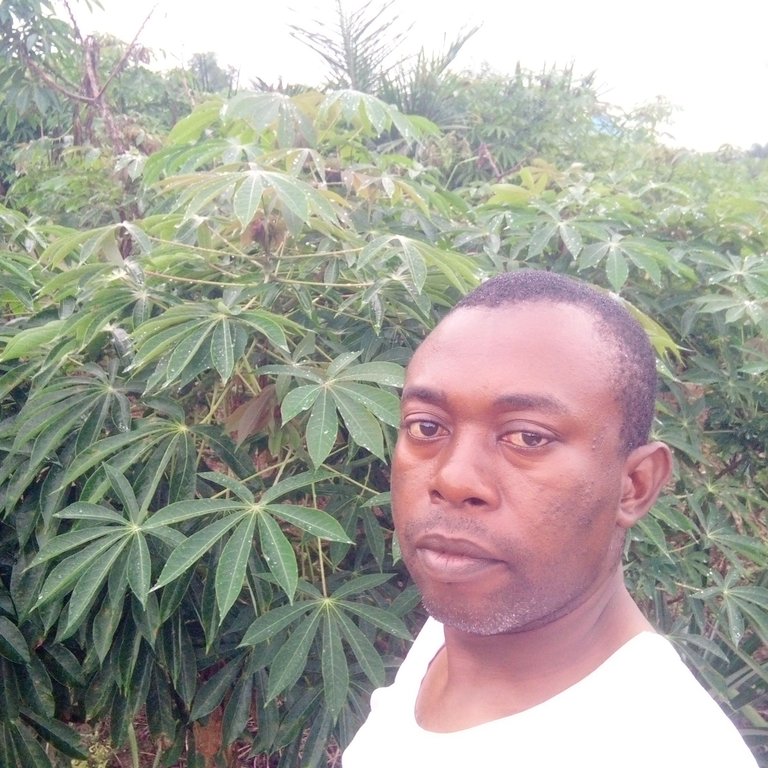
It began to drizzle as I stepped out of the house but I was determined to check how the farm had turned out in the last week.
On my way to the cassava farm, I caught sight of some ripe tomato fruits and decided to pluck. The fruits are so mature that they begin to burst open once they begin to ripen. Some of the stake I made to help them carry those heavy fruits fell off and make the fruits lay in the soil. The oil in particular seemed like it's acidic on the body of the fruits such that they begin to decay once they come in contact with the soil. After all the stakes had been fixed and the tomato plants had been tied to the stakes, I went further to the business of the day.
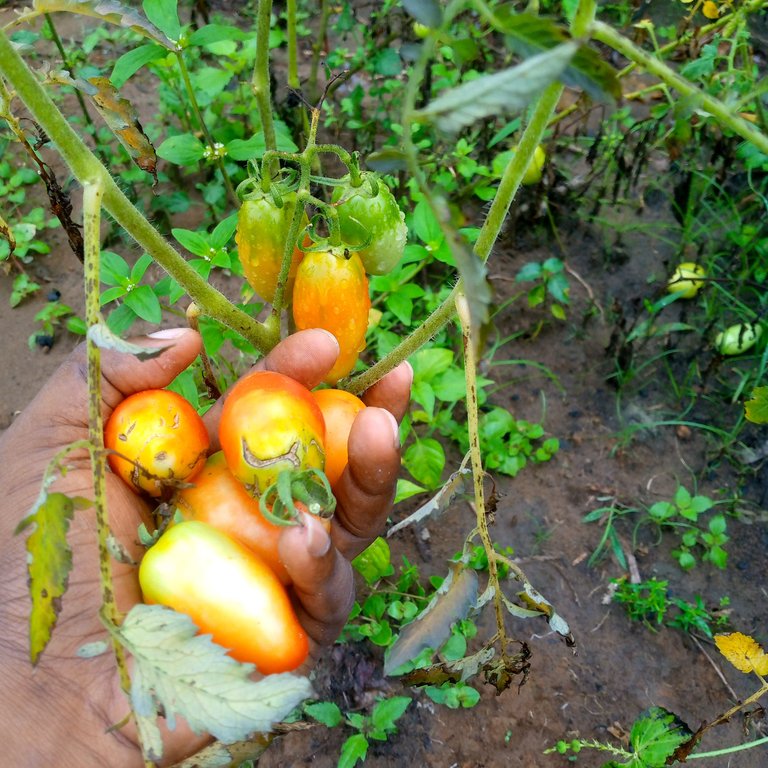
Some years ago, cassava begin a widely known crop. It became an export crop since its end products are used to make flour for baking and even fuel fossils can be deducted from it. This made a lot of people divert attention from poultry farms (livestock feeds got highly expensive) to cassava farming. Mine intention is not to export the crop but to process it into local food for the family and to sell the excess to neighbours. This idea worked during the last planting season and this year, since food items are expensive, I hope to make a lot of profit from it.
Now, at the farm, I found out that my cassava plants are doing just fine. There was no evidence of pests eating on any of the plants. How elated I was. But some other observation caught my attention.
The species of cassava stem that was planted was the green leaf node stem. This stem is known to be very fruitful in yielding big tubers when planted in loamy soil and that was the exact thing I did. The green node cassava stem can mature after nine months. The other stem is the red leaf node stem. That is known to her mature after twelve months. Both cassava stems would begin to show a feature at maturity and that is that the leaves would begin to dry up and fall off the stem.
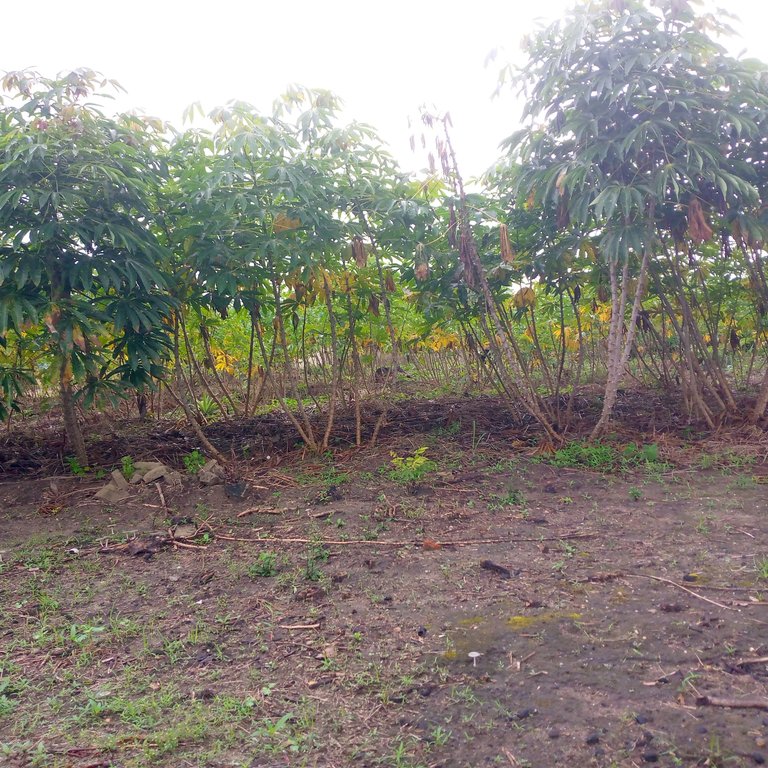
This got me worried. The leaves are beginning to fall when it has just clocked six months. That's quite worrisome. I was looking at harvesting the plant in January but with the leaves falling off now, I'd probably just give it a little more time before the harvesting will begin.
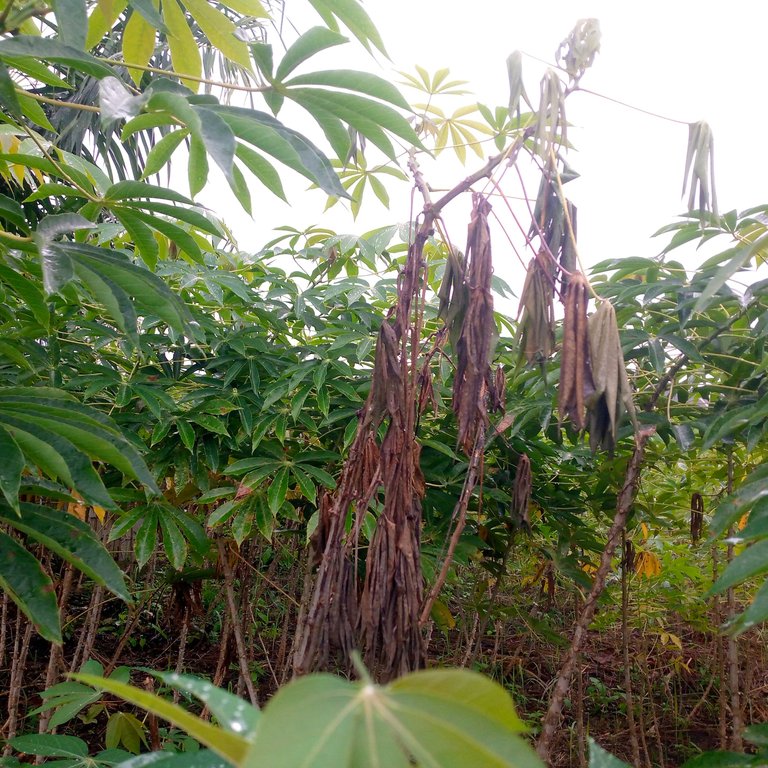
One common thing that happens when cassava plants are not harvested when the leaves begin to get dry and fall off is that the tuber underneath the ground would begin to decay.
Fair enough, the next round of rain has just begun, the cassava crops would have enough reason to expand under the earth. After a complete check around the farm, all my fears disappeared. This cassava farm is on six plots of land, an approximate of one acre. Next year, I hope to expand the cassava farm to three or four acres.
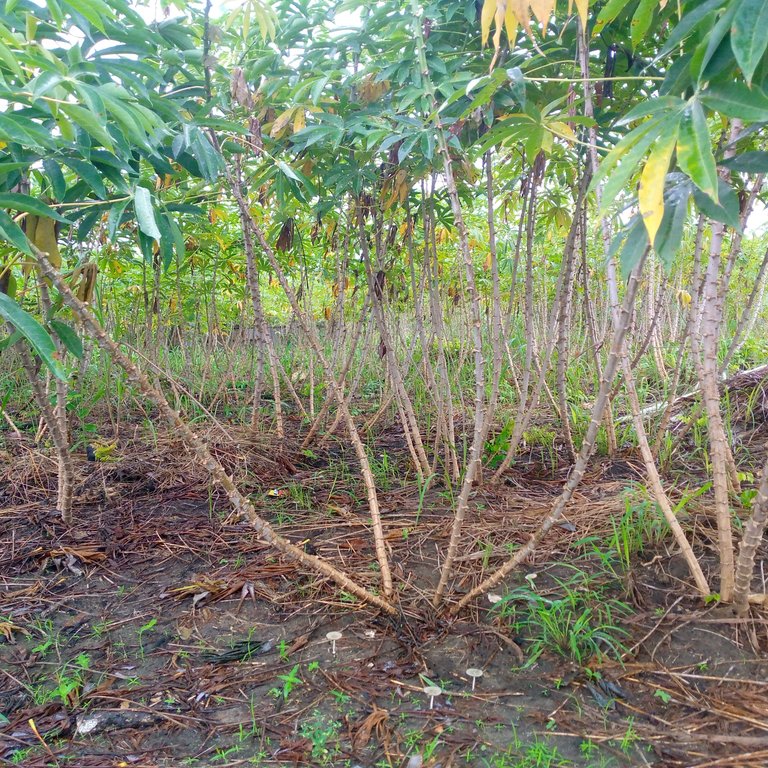
You are obviously doing a great job with your cassava farm. It is nice to see the plants are doing well despite your concerns about pests and leaf fall. Your plans for expansion next year sound exciting. We can’t wait to see how it all grows. Keep up the great work.
Many thanks for supporting me.and for this comment, it's so inspiring @diyhub.
Thank you, @splinterboost